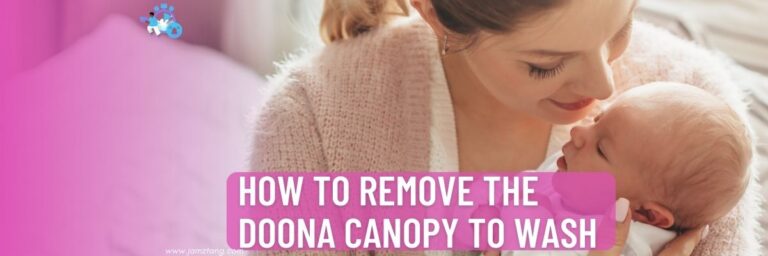What Are the Most Common Baby Cot Problems?
It is a happy moment when you welcome a new baby into your family. However, it also entails a variety of duties and worries, one of which is guaranteeing their security and comfort. A baby cot, sometimes referred to as a crib, is a crucial piece of furniture in a nursery since it offers a secure and cozy sleeping space for your child. Nevertheless, infant cots can have their fair share of problems and worries, just like any other product. We’ll talk about some of the most typical baby cot issues in this blog post so parents can keep their kids secure.
Common Problems of Baby Cot
Safety Standards Compliance
The observance of infant cots to safety regulations is one of the main issues. Always get a cot that complies with the safety requirements established by the regulatory body in your nation to protect the safety of your infant. Common safety issues include the spacing between slats, corner post height, and lead paint. Always check for recalls and stay updated on safety guidelines to protect your child from potential hazards.
Poor Assembly
A baby cot’s improper installation might result in a number of safety problems. The crib could collapse or have unsecured components that could hurt your infant if it is not put together properly. When assembling the baby cot, always pay close attention to the manufacturer’s instructions, and if you are dubious about your ability to put it together, think about getting help from an expert.
Slat Spacing
A crib’s frame spacing is essential to prevent your child from getting caught between or dropping through them. For the safety of your kid, the space between the objects should not be wider than 2 3/8 inches (6 cm). Check the slat spacing regularly to ensure it remains within this safe range.
Drop-Side Crib Hazards
Drop-side cribs were once popular but have been banned in many countries due to safety concerns. These cribs can pose a significant risk if the drop-side mechanism fails, potentially trapping or injuring the baby. If you have a drop-side crib, it’s advisable to replace it with a safer, fixed-side model.
Quality of Materials
The materials used in the crib and baby swing construction can impact its durability and safety. Look for cribs made from solid, non-toxic materials free from harmful chemicals. Avoid cribs with sharp edges or corners that could harm your child.
Mattress Fit
A properly fitting mattress is crucial for your baby’s safety. Gaps between the mattress and the crib’s sides can create a risk of entrapment. Ensure the mattress fits snugly within the crib, leaving no space for your baby to get stuck.
Mobiles and Toys
While mobiles and soft toys can be cute additions to a baby’s crib, they can also pose choking hazards. Ensure any items you place in the crib are age-appropriate and do not have small parts that can come loose.
Cot Positioning
The placement of the crib within the nursery is important. Avoid placing the baby cot near windows with long cords that could pose a strangulation risk. Also, ensure that the crib is away from radiators, heating vents, and direct sunlight to maintain a comfortable sleeping environment.
Solutions for Common Baby Cot Problems
Solving common baby cot issues is essential to ensure the safety and comfort of your baby. Here are solutions to address some of the most common baby cot problems:
1. Safety Standards Compliance:
- Solution: Always purchase a crib, swing, and baby cradle that meets the safety standards set by your country’s regulatory authority. Check for certifications or labels that indicate compliance. Additionally, stay updated on safety guidelines and recalls by regularly checking the manufacturer’s website or relevant regulatory websites.
2. Poor Assembly:
- Solution: Follow the manufacturer’s instructions carefully when assembling the crib. Double-check that all parts are securely fastened, and consider seeking professional help if you are unsure about the assembly process. Inspect the baby cot for loose or damaged parts and tighten any screws or bolts.
3. Slat Spacing:
- Solution: Regularly measure the spacing between slats to ensure it remains within the safe range (no more than 2 3/8 inches or 6 cm apart). If you notice any too-wide slats, consider using a crib bumper specifically designed for safe use.
4. Drop-Side Crib Hazards:
- Solution: If you have a drop-side crib, it is advisable to replace it with a safer, fixed-side model. Fixed-side cribs are more stable and less prone to mechanical failure. Discontinue drop-side cribs and dispose of them according to local regulations.
5. Quality of Materials:
- Solution: Choose cribs made from solid, non-toxic materials that meet safety standards. Avoid cribs with sharp edges or corners that could harm your child. Regularly inspect the crib for any signs of wear or damage to materials and address any issues promptly.
6. Mattress Fit:
- Solution: Ensure that the mattress fits snugly within the baby cot with no gaps between the mattress and the crib’s sides. Use a mattress for your crib’s dimensions to guarantee a proper fit.
7. Mobiles and Toys:
- Solution: Use age-appropriate toys and mobiles that do not have small parts that can come loose. Regularly check for loose parts or damaged toys and replace them as needed. Keep soft toys and pillows out of the crib during sleep to reduce the risk of suffocation.
8. Cot Positioning:
- Solution: Place the crib away from windows with long cords, blinds, or curtains that could pose a strangulation risk. Ensure that cords and drapes are out of reach. Also, keep the baby cot bed away from radiators, heating vents, and direct sunlight to maintain a comfortable sleeping environment.
In addition to these solutions, it’s crucial to conduct regular safety checks on your baby’s crib and be vigilant about potential hazards. Stay informed about product recalls and safety updates, and always prioritize your baby’s safety and well-being regarding their sleeping environment.
Conclusion
Your baby’s safety and well-being are paramount, and being aware of common baby cot problems is crucial for providing a secure sleeping environment. Regularly inspect the crib for any signs of wear and tear, and stay informed about safety standards and recalls in your region. Addressing these common baby cot problems ensures that your little one sleeps soundly and safely.







